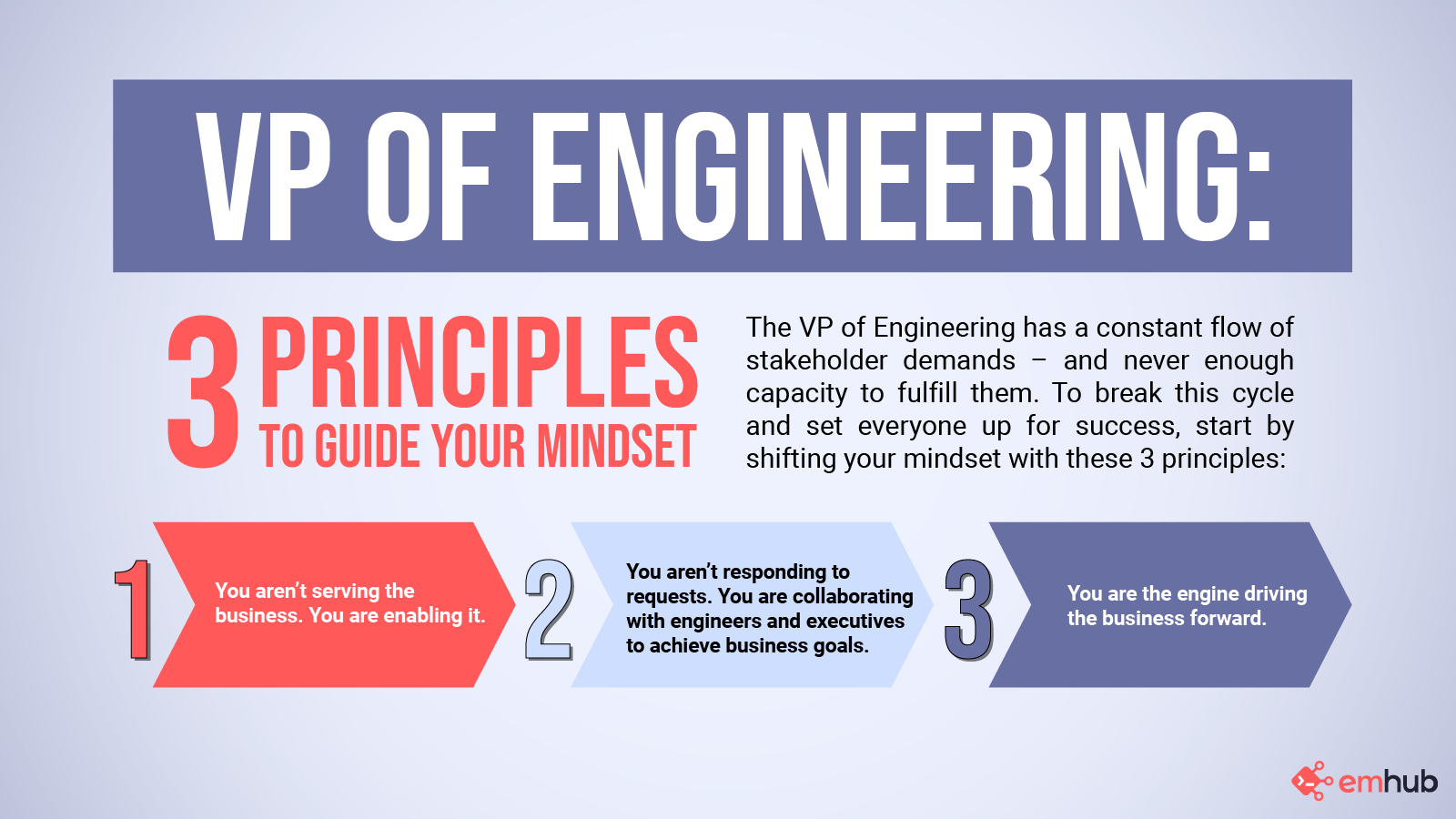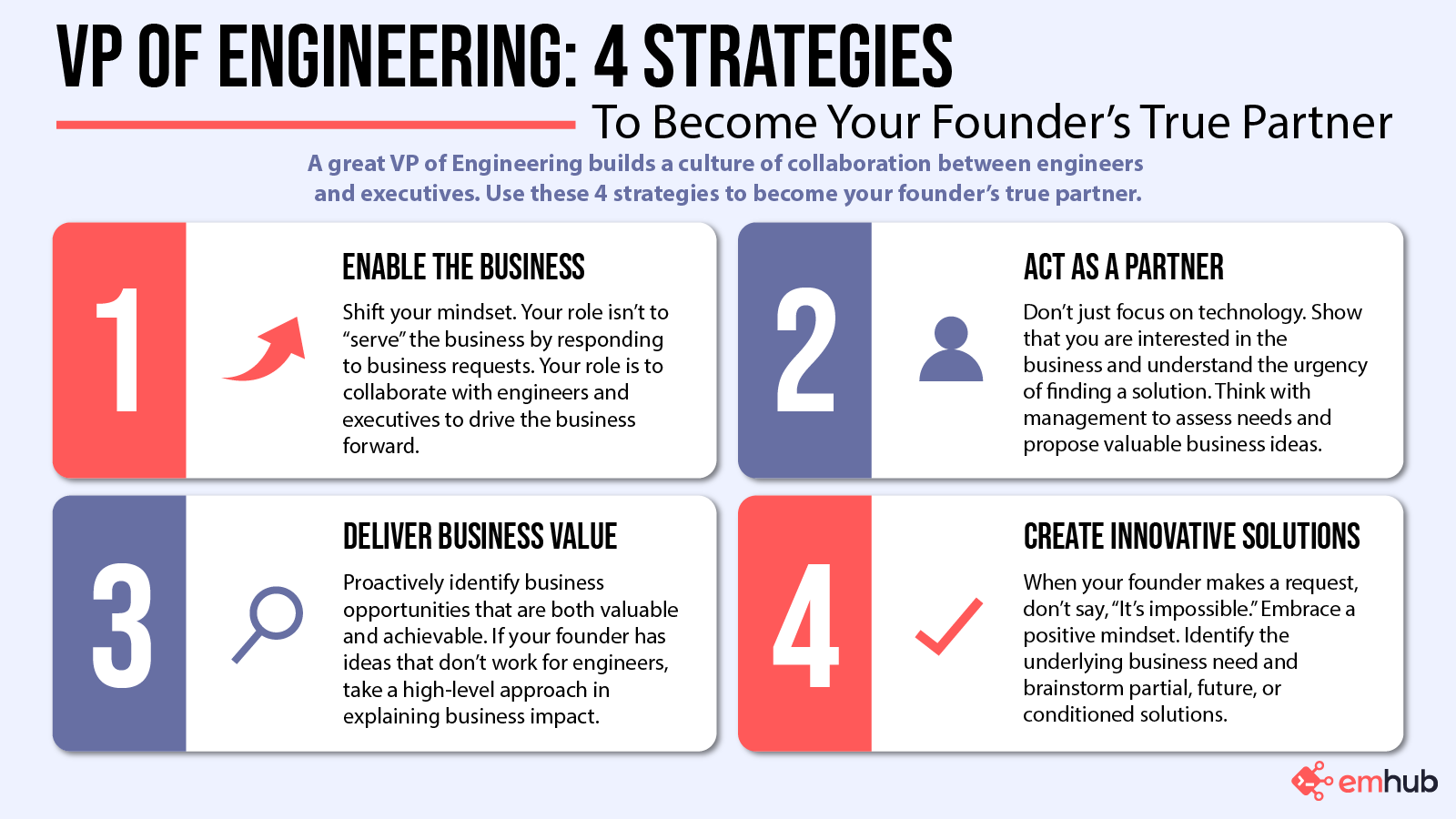Miri Curiel is a tech management expert with 25+ years of experience serving as VP R&D for lean startups and large companies. As a consultant, she helps engineering organizations raise great managers, create a healthy and productive work culture, and elevate their engineering and product teams. Miri is also a popular speaker on the subjects of management, career, and diversity.
Executives and engineers speak two different languages. As a VP of Engineering, you have to speak both – all while making hard decisions that you know won’t please everyone.
In many ways, the VP of Engineering is the loneliest role. You are under constant pressure to deliver, but can’t possibly meet every request. There is no technical person to consult with at your level, so you are often making decisions alone. On top of that, a lack of technical understanding makes it difficult for others to understand your tasks and plans.
The reality is that your founder may not understand what you do on a day-to-day basis. In order to deliver on the technical and business sides of your role, you need to become a partner to your founder (or CEO).
Today I will cover strategies for building a win-win partnership with your founder:
Enable your business, don’t serve the business
Companies tend to view the engineering team as a department that “serves” the business. As VP of Engineering, you are expected to provide technical solutions to a wide range of business requests under tight deadlines.
Unfortunately, there are always more business requirements than capacity to fulfill them. It’s easy for stakeholders to make demands, so they do – frequently. It’s a lot harder for engineers to deliver on this constant flow of demands, and the resources are limited. The result is that most stakeholders don’t get what they want, and the engineering team is to blame.
The bottom line: “serving” the business is an unproductive and frustrating dynamic. Internal and external stakeholders are disappointed, and hardworking engineers aren’t properly appreciated.
I encourage engineering managers to reframe their role within the company with these 3 guiding principles:
- You are not serving the business: you are enabling it.
- Instead of passively responding to requests, you are collaborating with engineers and executives to achieve business goals.
- You are the engine driving the business forward.
Once you change how you perceive your role, you can take steps to change others’ perception of your role.

Act as a partner, not a supplier
To build off the last point, when your role is perceived as "serving" the business, a cascade effect can occur where you're also viewed as a "supplier." Executives make demands; engineers supply solutions. When not all demands can be met by the “supplier,” it can cause tension between a VP and their founder.
As a VP, you can break this cycle of frustration and misalignment by acting as a partner to your founder. While a supplier does whatever they are told, a partner understands the urgency of finding a solution. Instead of responding to management, you proactively think with management to assess needs, find cost-effective solutions, and propose valuable business ideas.
Many VPs of Engineering only focus on technology. To collaborate with your founder as a partner, make sure you are interested in the business. This will enable you to communicate in business terms and voice your opinions about value.
For example, let’s say you are communicating technical debt to invest in refactoring and research. Try rephrasing your message in terms of how it affects customers and how it affects the business. When you focus on pain points your partner understands, you will be able to align and collaborate on solutions more effectively.
The shift from “supplier” to “partner” won’t happen overnight. However, the more you show your founder that you are invested in business outcomes, the more your insights will be valued.
Focus on delivering business value
As you build credibility in business conversations, you also need to think strategically about where you can deliver value. With a dual technology and business role, you are uniquely positioned to propose ideas that are both valuable and achievable.
If you have established a culture of trust with your founder, they are more likely to listen when you push back on ideas that may not work for engineers. Try framing the conversation in terms of solutions, not features. For example, when your founder requests the engineering team to deliver on a set of features, take a high-level approach in explaining business impact. Answering these questions will lead you to a creative win-win solution:
- What is the actual business need behind this feature requirement?
- Are there alternatives that can meet the same business need, but are less costly or risky? What’s the most cost-effective way to supply the required business outcome?
I’ve worked with many engineering managers who are passionate about building the perfect delivery machine. As for what the machine should develop – they leave that decision to “the business people.” This compartmentalized approach sets engineers (and their managers) up to fail. As a VP of Engineering, it is your job to connect technical output to business outcomes. It’s not about optimizing the number of user stories your R&D machine can produce; it’s about optimizing the value they create for the business.
Create innovative solutions and growth opportunities
A founder once told me, “Don’t say ‘it’s impossible.’ That drives me crazy!”
“But sometimes it is impossible,” I said.
“Say ‘it is possible, but only if. If I am given more time, if priorities change, if funds are available.’”
This tip changed my entire mindset as a VP of Engineering.
It helped me understand that my role is not to respond to requirements, commit to deadlines, and make sure the engineering department always meets them. My role is to understand the underlying business need and come up with creative solutions that enable growth without compromising the technology.
Instead of dismissing an idea as impossible, embrace the opportunity to innovate. Brainstorm partial, future, or conditioned solutions. Approaching your founder with a positive mindset truly works like magic: it positions you as a strong manager and partner, and pushes you to develop more innovative solutions.
Many companies grow through technology. As a CTO or VP, your job builds a culture of innovation for people to raise ideas based on technology. Innovation and technology help solve real business solutions.
For example, Netflix started their business by mailing shipments of DVDs without penalties. Through technological innovation, the company then built a recommendation algorithm – and ultimately evolved into the streaming service we know today.
These were the bridges that were created between business problems and R&D partnering to discover innovation and ideas.

Final thoughts
At the end of the day, your founder may not know the best way to achieve their desired business outcomes. Without a technical partner to guide executive demands, engineering teams can become trapped in a cycle of unrealistic expectations and failed delivery.
That’s where the VP of Engineering comes in. By using the strategies we’ve covered today, you can align priorities with your founder and open a productive dialogue between engineers and management. This lays the foundation for a true partnership: one where you collaborate with executives to create innovative, achievable business solutions.
Partnering with your founder sets everyone up for success. Your engineers will deliver value more frequently, you will communicate more effectively with management, and your founder will recognize the value you bring to the business.